Springer Texts in Statistics
Series Editors:
G. Casella
S. Fienberg
I. Olkin
�
Springer Texts in Statistics
For other titles published in this series, go to www.springer.com/series/417
�
Tze Leung Lai · Haipeng Xing
Statistical Models and
Methods for Financial
Markets
123
�
Tze Leung Lai
Department of Statistics
Stanford University
Stanford, CA 94305
USA
lait@stanford.edu
Haipeng Xing
Department of Statistics
Columbia University
New York, NY 10027
USA
xing@stat.columbia.edu
Editorial Board
George Casella
Department of Statistics
University of Florida
Gainesville, FL 32611-8545
USA
Stephen Fienberg
Department of Statistics
Carnegie Mellon University
Pittsburgh, PA 15213-3890
USA
Ingram Okin
Department of Statistics
Stanford University
Stanford, CA 94305
USA
ISBN: 978-0-387-77826-6
DOI: 10.1007/978-0-387-77827-3
e-ISBN: 978-0-387-77827-3
Library of Congress Control Number: 2008930111
c 2008 Springer Science+Business Media, LLC
All rights reserved. This work may not be translated or copied in whole or in part without the written
permission of the publisher (Springer Science+Business Media, LLC, 233 Spring Street, New York,
NY 10013, USA), except for brief excerpts in connection with reviews or scholarly analysis. Use in
connection with any form of information storage and retrieval, electronic adaptation, computer software,
or by similar or dissimilar methodology now known or hereafter developed is forbidden.
The use in this publication of trade names, trademarks, service marks, and similar terms, even if they are
not identified as such, is not to be taken as an expression of opinion as to whether or not they are subject
to proprietary rights.
Printed on acid-free paper
9 8 7 6 5 4 3 2 1
springer.com
�
To Letitia and Ying
�
Preface
The idea of writing this book arose in 2000 when the first author was assigned
to teach the required course STATS 240 (Statistical Methods in Finance)
in the new M.S. program in financial mathematics at Stanford, which is an
interdisciplinary program that aims to provide a master’s-level education in
applied mathematics, statistics, computing, finance, and economics. Students
in the program had different backgrounds in statistics. Some had only taken a
basic course in statistical inference, while others had taken a broad spectrum
of M.S.- and Ph.D.-level statistics courses. On the other hand, all of them
had already taken required core courses in investment theory and derivative
pricing, and STATS 240 was supposed to link the theory and pricing formulas
to real-world data and pricing or investment strategies. Besides students in
the program, the course also attracted many students from other departments
in the university, further increasing the heterogeneity of students, as many
of them had a strong background in mathematical and statistical modeling
from the mathematical, physical, and engineering sciences but no previous
experience in finance. To address the diversity in background but common
strong interest in the subject and in a potential career as a “quant” in the
financial industry, the course material was carefully chosen not only to present
basic statistical methods of importance to quantitative finance but also to
summarize domain knowledge in finance and show how it can be combined
with statistical modeling in financial analysis and decision making.
The course material evolved over the years, especially after the second
author helped as the head TA during the years 2004 and 2005. The course
also expanded to include a section offered by the Stanford Center for Profes-
sional Development, with nondegree students in the financial industry taking
it on-line (http://scpd.stanford.edu). The steady increase in both student
interest and course material led to splitting the single course into two in 2006,
with STATS 240 followed by STATS 241 (Statistical Modeling in Financial
Markets). Part I of this book, Basic Statistical Methods and Financial
�
viii
Preface
Applications, is covered in STATS 240 and has six chapters. Chapters 1
and 2 cover linear regression, multivariate analysis, and maximum likelihood.
These statistical methods are applied in Chapter 3 to a fundamental topic
in quantitative finance, namely portfolio theory and investment models, for
which Harry Markowitz and William Sharpe were awarded Nobel Prizes in
Economics. Whereas the theory assumes the model parameters are known,
in practice the parameters have to be estimated from historical data, and
Chapter 3 addresses the statistical issues and describes various statistical ap-
proaches. One approach is deferred to Section 4.4 in Chapter 4, where we
introduce Bayesian methods after further discussion of likelihood inference
for parametric models and its applications to logistic regression and other
generalized linear models that extend the linear regression models of Chapter
1 via certain “link functions.” Chapter 4 also extends the least squares method
in Chapter 1 to nonlinear regression models. This provides the background
for the nonlinear least squares approach, which is used in various places in
Part II of the book. Another important topic in quantitative finance that
has attracted considerable attention in recent years, especially after the 2003
Nobel Prizes to Robert Engle and Clive Granger, is financial time series. Af-
ter introducing the basic ideas and models in time series analysis in Chapter
5, Chapter 6 extends them to develop dynamic models of asset returns and
their volatilities. The six chapters that constitute Part I of the book provide
students in financial mathematics (or engineering) and mathematical (or com-
putational) finance programs with basic training in statistics in a single course
that also covers two fundamental topics in quantitative finance to illustrate
the relevance and applications of statistical methods.
Part II of the book, Advanced Topics in Quantitative Finance, is covered
in STATS 241 at Stanford. It introduces nonparametric regression in Chapter
7, which also applies the methodology to develop a substantive-empirical ap-
proach that combines domain knowledge (economic theory and market prac-
tice) with statistical modeling (via nonparametric regression). This approach
provides a systematic and versatile tool to link the theory and formulas stu-
dents have learned in mathematical finance courses to market data. A case in
point is option pricing theory, the importance of which in financial economics
led to Nobel Prizes for Robert Merton and Myron Scholes in 1997, and which is
a basic topic taught in introductory mathematical finance courses. Discrepan-
cies between the theoretical and observed option prices are revealed in certain
patterns of “implied volatilities,” and their statistical properties are studied
in Chapter 8. Section 8.3 describes several approaches in the literature to ad-
dress these discrepancies and considers in particular a substantive-empirical
approach having a substantive component associated with the classical Black-
Scholes formula and an empirical component that uses nonparametric regres-
sion to model market deviations from the Black-Scholes formula. Chapter 9
introduces advanced multivariate and time series methods in financial econo-
�
Preface
ix
metrics. It provides several important tools for analyzing time series data on
interest rates with different maturities in Chapter 10, which also relates the
statistical (empirical) analysis of real-world interest rates to stochastic process
models for the valuation of interest rate derivatives in mathematical finance.
The finance theories in Chapters 8 and 10 and in mathematical finance courses
assume the absence of arbitrage. “Statistical arbitrage,” which has become an
important activity of many hedge fund managers, uses statistical learning
from market prices and trading patterns to identify arbitrage opportunities
in financial markets. Chapter 11 considers statistical trading strategies and
related topics such as market microstructure, data-snooping checks, transac-
tion costs, and dynamic trading. Chapter 12 applies the statistical methods
in previous chapters and also describes new ones for risk management from
the corporate/regulatory perspective, protecting the financial institution and
its investors in case rare adverse events occur.
Since M.S. students in financial mathematics/engineering programs have
strong mathematical backgrounds, the mathematical level of the book is tar-
geted toward this audience. On the other hand, the book does not assume
many prerequisites in statistics and finance. It attempts to develop the key
methods and concepts, and their interrelationships, in a self-contained man-
ner. It is also intended for analysts in the financial industry, as mentioned
above in connection with the Stanford Center for Professional Development,
and exposes them to modern advances in statistics by relating these advances
directly to financial modeling.
Because Part I is intended for a one-semester (or one-quarter) course, it
is presented in a focused and concise manner to help students study and re-
view the material for exercises, projects, and examinations. The instructor can
provide more detailed explanations of the major ideas and motivational ex-
amples in lectures, while teaching assistants can help those students who lack
the background by giving tutorials and discussion sessions. Our experience
has been that this system works well with the book. Another method that we
have used to help students master this relatively large amount of material in
a single course is to assign team projects so that they can learn together and
from each other.
Besides students in the M.S. program in financial mathematics at Stanford,
the course STATS 241, which uses Part II of the book, has also attracted Ph.D.
students in economics, engineering, mathematics, statistics, and the Graduate
School of Business. It attempts to prepare students for quantitative financial
research in industry and academia. Because of the breadth and depth of the
topics covered in Part II of the book, the course contents actually vary from
year to year, focusing on certain topics in one year and other topics in the
next. Again, team projects have proved useful for students to learn together
and from each other.
�
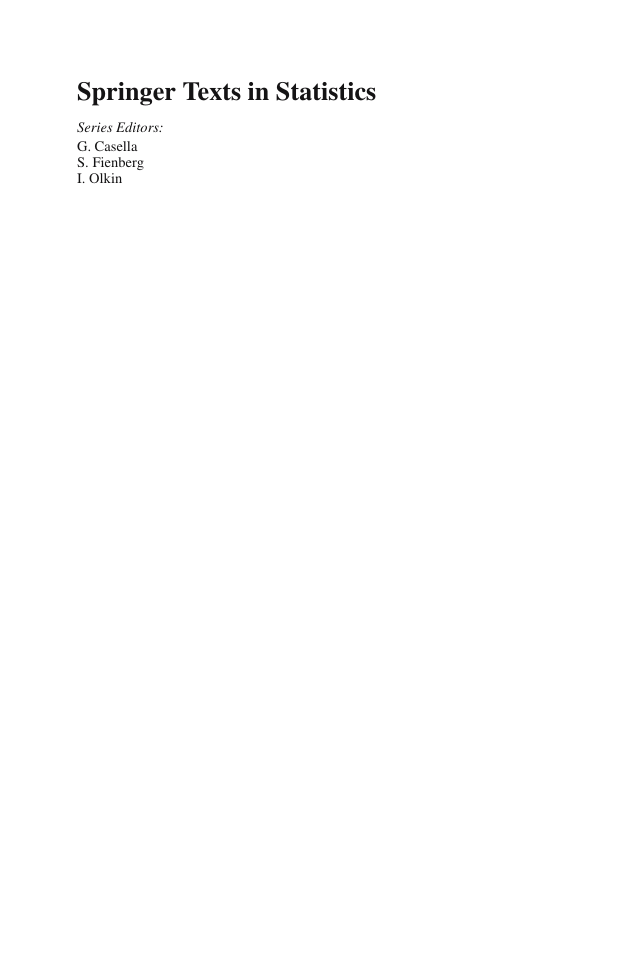

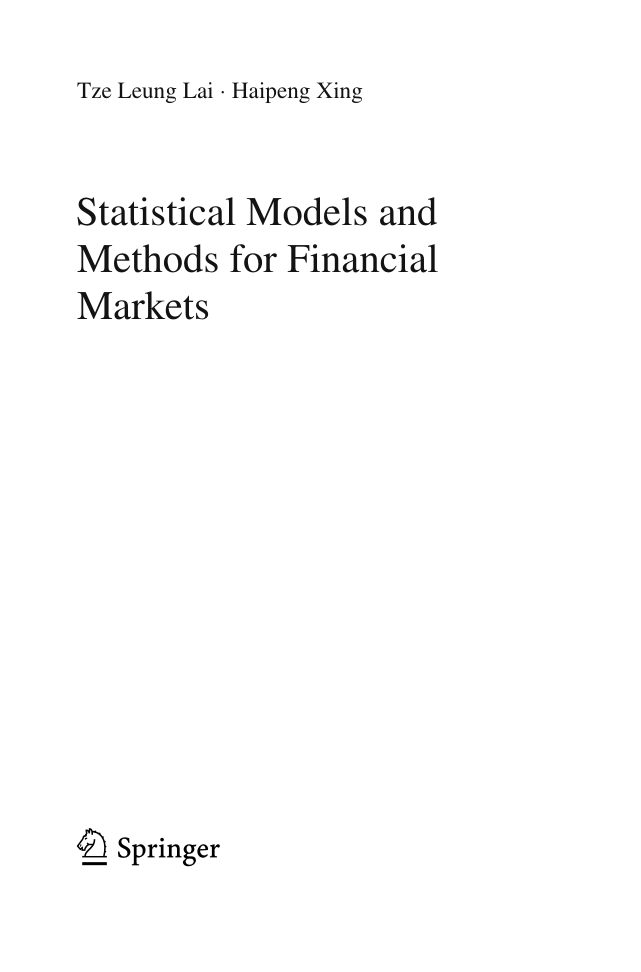
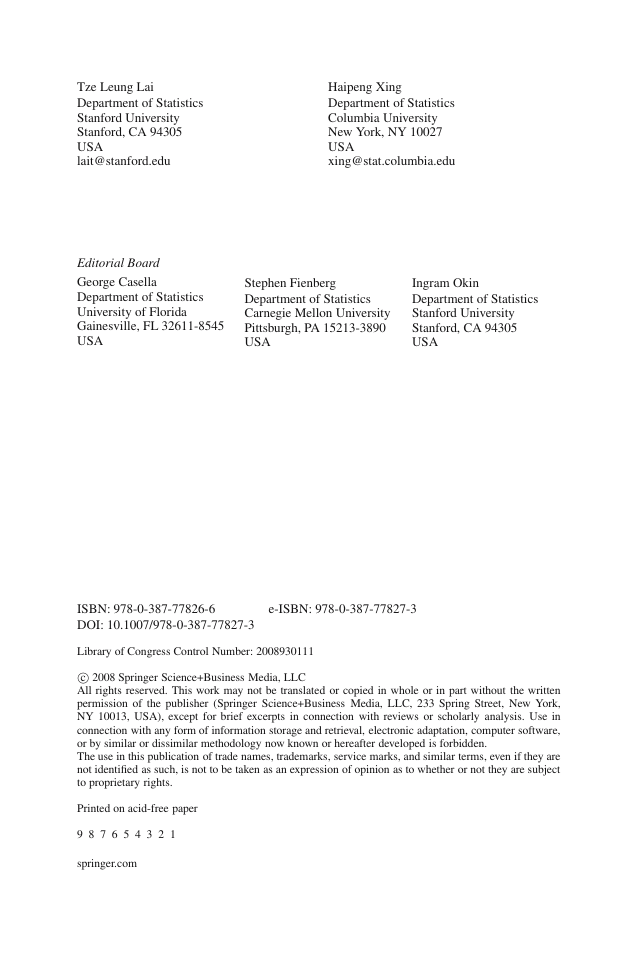

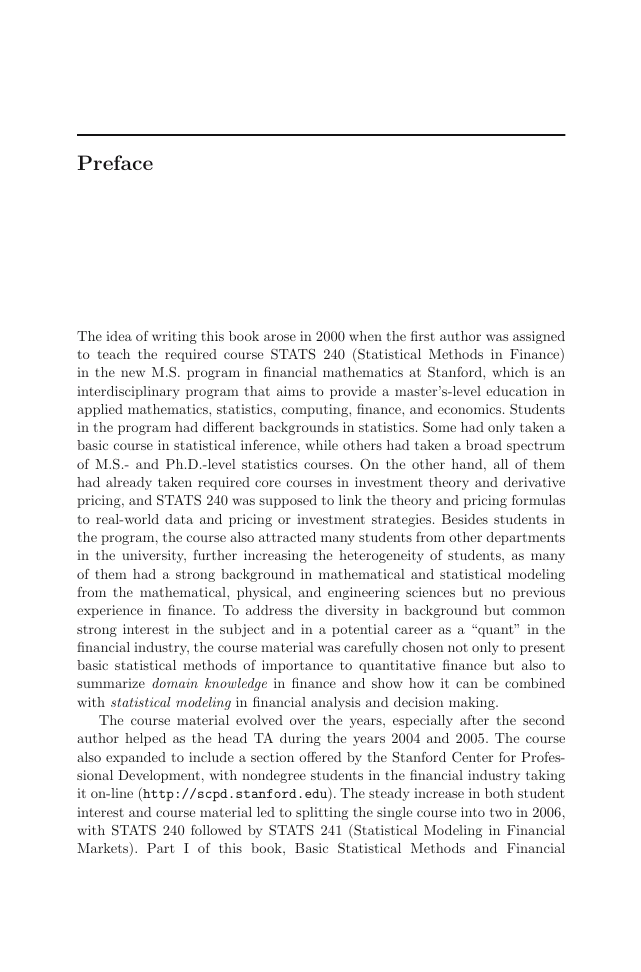
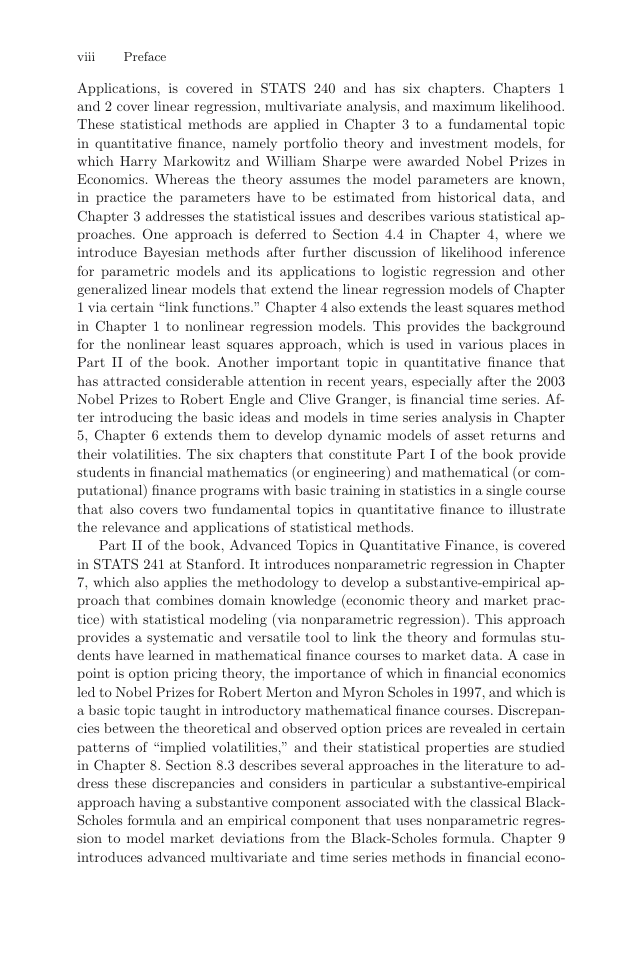
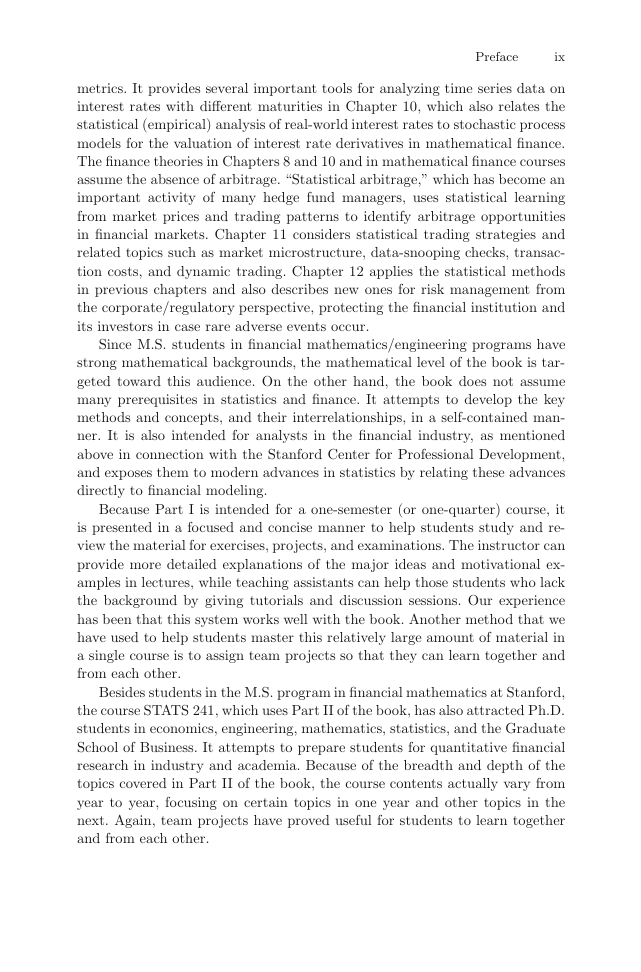








 2023年江西萍乡中考道德与法治真题及答案.doc
2023年江西萍乡中考道德与法治真题及答案.doc 2012年重庆南川中考生物真题及答案.doc
2012年重庆南川中考生物真题及答案.doc 2013年江西师范大学地理学综合及文艺理论基础考研真题.doc
2013年江西师范大学地理学综合及文艺理论基础考研真题.doc 2020年四川甘孜小升初语文真题及答案I卷.doc
2020年四川甘孜小升初语文真题及答案I卷.doc 2020年注册岩土工程师专业基础考试真题及答案.doc
2020年注册岩土工程师专业基础考试真题及答案.doc 2023-2024学年福建省厦门市九年级上学期数学月考试题及答案.doc
2023-2024学年福建省厦门市九年级上学期数学月考试题及答案.doc 2021-2022学年辽宁省沈阳市大东区九年级上学期语文期末试题及答案.doc
2021-2022学年辽宁省沈阳市大东区九年级上学期语文期末试题及答案.doc 2022-2023学年北京东城区初三第一学期物理期末试卷及答案.doc
2022-2023学年北京东城区初三第一学期物理期末试卷及答案.doc 2018上半年江西教师资格初中地理学科知识与教学能力真题及答案.doc
2018上半年江西教师资格初中地理学科知识与教学能力真题及答案.doc 2012年河北国家公务员申论考试真题及答案-省级.doc
2012年河北国家公务员申论考试真题及答案-省级.doc 2020-2021学年江苏省扬州市江都区邵樊片九年级上学期数学第一次质量检测试题及答案.doc
2020-2021学年江苏省扬州市江都区邵樊片九年级上学期数学第一次质量检测试题及答案.doc 2022下半年黑龙江教师资格证中学综合素质真题及答案.doc
2022下半年黑龙江教师资格证中学综合素质真题及答案.doc